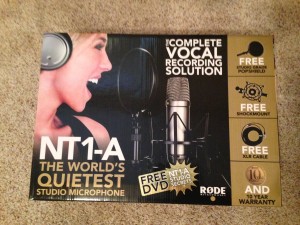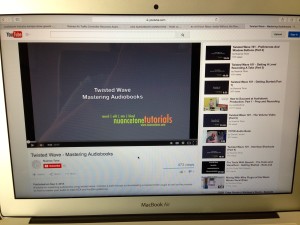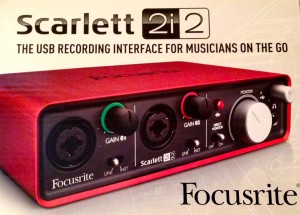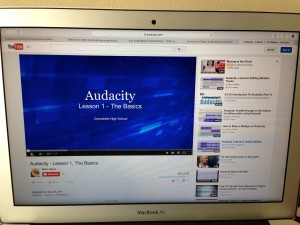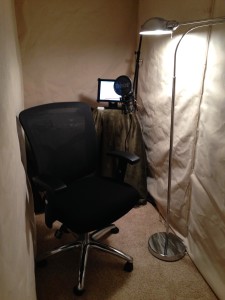Well, as you can see by comparing the dates of my last post and this one, it took me much longer than a week to continue this story.
Why?
Because I took an in-depth ACX Master Class in audiobook narration during the whole month of February and then hit the ground running in terms of setting up my narrator profile on ACX, auditioning for narrating jobs (I have two more lined up besides my own two novels and my friend’s novel), and actually beginning the recording of THE RECKONING (more on all of those things later).
First, I want to share my mistakes. We learn by mistakes, but we often don’t have to make them ourselves if we can learn by someone else’s. So, hopefully, I’ll save some of you some added expense, time, and grief.
Unless you want to become a professional sound engineer, you don’t need all the equipment recommended by ACX in their how-to-do-it-yourself video. I believe that video is now a bit out of date and ought to be re-done in order to save people a lot of headaches. I’m not saying the principles demonstrated aren’t true. They are. But there are cheaper, less complicated alternatives to some of the recommended items. And some are freely available to the aspiring audiobook narrator/producer.
The most important piece of equipment is a good microphone (along with adequate headphones), and I don’t regret getting the one I ended up with: the Røde NT1A. I got a good deal on it because it came in a package that included a shock mount and pop filter. It’s an excellent studio mic, not a USB mic, so it required a microphone stand (I got the boom kind for flexibility) and an audio interface.
Here’s where I made my first mistake. Since ACX recommended Pro Tools as their audio editing software of choice, and said I could get the software included free with an audio interface called the MBox Mini, I went ahead and ordered it off of Amazon. It can be expensive, so I ordered one of the used deals because the seller claimed the software was included. Well, it may have been included but by the time I got it, the owner of Pro Tools had switched its support website around and, try as I might, I could not get the program to upload on my new MacBook Pro.
Long story short…I gave up on the MBox Mini and Pro Tools because:
1. I couldn’t get my mic to work on the MBox Mini and I couldn’t access the software.
2. The more I read about Pro Tools (which I should have done in the first place, before buying it), the more apparent it became that it had a monster learning curve.
3. I discovered a much simpler, more intuitive audio editing program called TwistedWave that was designed for Macs and only cost $80.
So I ended up ordering the Scarlett 2i2 audio interface, which works really well with my mic.
By the time I was getting the hang of TwistedWave and feeling ready to start recording, I took the plunge and registered for the ACX Master Class (not sponsored by ACX, but conducted by two well known professionals in the voiceover and narration field, one of whom is an Audible Approved Narrator).
Through twice weekly conference calls and online support (training videos, templates, etc.), I soon learned there was an even cheaper and more efficient way to go than TwistedWave.
You can download Audacity for free and that, plus a couple of other plugins (also free) should give you most of what you need to successfully produce audiobooks. I can’t give away all the secrets here (including the essential editing secret which put me firmly in the Audacity camp). After all, the class cost a hefty amount, is only offered once a year, and I don’t think sharing all I learned would be considered “fair use.”
But I highly recommend it if you’re serious about getting into the business.
One thing I will share: There’s an excellent USB mic alternative…the Audio-Technica AT2020USB PLUS Cardioid Condenser mic, which doesn’t necessitate an audio interface like the Scarlett 2i2, and is more portable in case you need to do auditions on the road, etc.
Come back next Monday (and, yes, this time I will have something new posted by then) for Part 3 when I talk about how ACX is set up for both authors and narrators.

